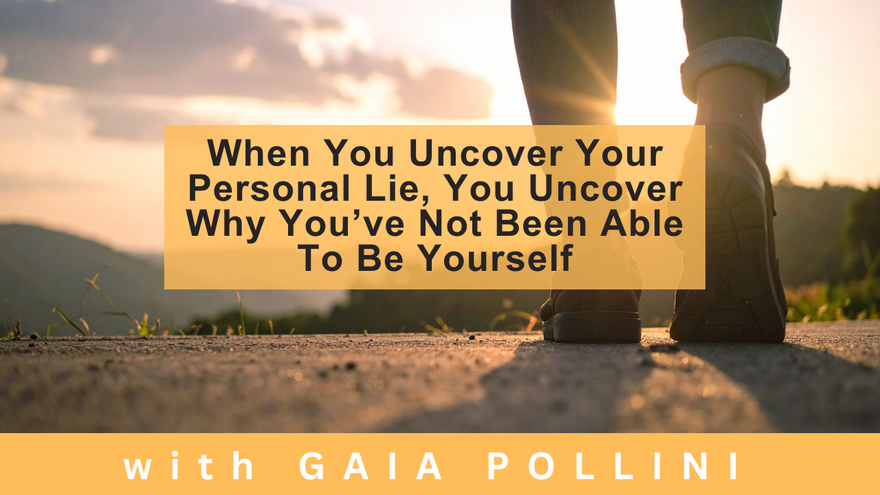
The quiet sentence that shaped you
There is often a single, quiet sentence living inside us.
A sentence we did not choose but somehow came to believe.
“I’m too much.”
“I’m not interesting.”
“I must get it right.”
“I’m unlovable.”
This is the personal lie. It doesn’t arrive as drama. It settles in like weather and begins to organise our choices, our posture, our relationships, our energy. And because it is familiar, we mistake it for truth.
Shame-lids and pride-masks
Personal lies tend to wear two costumes: shame and pride.
-
Shame says: You’re wrong. You’re not enough. Stay small.
-
Pride says: You’re only safe if you’re special. Be perfect. Be indispensable.
Both are prisons. Both keep us performing versions of ourselves rather than being ourselves.
Where the lie begins
The lie is rarely spoken outright. It is often absorbed. A parent’s distance. A family system that needed you to be “the quiet one,” “the helper,” “the capable one,” or even “the problem.” As children we are exquisitely intelligent: to keep connection, we twist ourselves into a role. The lie becomes a coping strategy that once kept you safe. Later, it becomes a cage.
How to recognise your personal lie
Try these gentle prompts:
-
If I said this about myself, people who love me would say “Are you kidding?”
-
What do I believe about me that drains my energy the moment I think it?
-
Which role did my family hand me that I’m still acting out?
Notice what rises. Notice where it sits in your body. Lies are not only sentences; they are sensations.
A simple, powerful practice: step out of the lie
You’ll need two small pieces of paper.
1) Name it.
On the first paper, write the lie (e.g., “I’m not interesting” or “I mustn’t make mistakes”). Place it on the floor and stand on it. Let your body feel what this belief does: the weight, the tightness, the shrinking. Give this a minute. Breathe.
2) Sense the likely truth.
Step off. Ask yourself: “If I were kind and honest, what is the likely truth?”
Write one grounded sentence on the second paper, such as:
-
“Sometimes I’m quiet, sometimes I’m compelling. I’m human, and that’s enough.”
-
“I can make mistakes and still be loved.”
Stand on the second paper. Feel the shift. Is there more air? Warmth? A loosening in the jaw? Let the body register this new place to stand.
3) Choose your ground.
Move between the two sheets once more so your nervous system clearly learns the difference. Then choose. You may need to choose again tomorrow. That’s okay. Practice makes a path.
“Who am I if I’m not that?”
When we loosen the lie, a tender question appears: Who am I now?
This is not a problem to solve. It is an opening. You are not the role you performed to be loved. You are not the sentence that kept you safe. You are the one who can feel, notice, and choose differently. That is being.
You don’t have to forgive before you feel
Sometimes people rush to “forgive” the past. In Being Me Therapy, we don’t skip steps. If grief is here, we let it move. If anger is here, we let it be acknowledged. Paradoxically, when feelings are allowed, love becomes honest.
Becoming the lie-detector
Over time you will start to notice the personal lie knocking: in the urge to overachieve, in the panic when you’re imperfect, in the compulsion to rescue, in the habit of disappearing. Each time, you can whisper, “Not today. I know what you are.” And you step, again, onto the truer ground.
If this resonates
This is the heart of my work. Inside the Being Me Therapy membership, we explore these patterns gently, somatically, and in community - so the nervous system learns safety in truth. If you’re ready to stand somewhere kinder, you’re warmly welcome to join us.

Comments